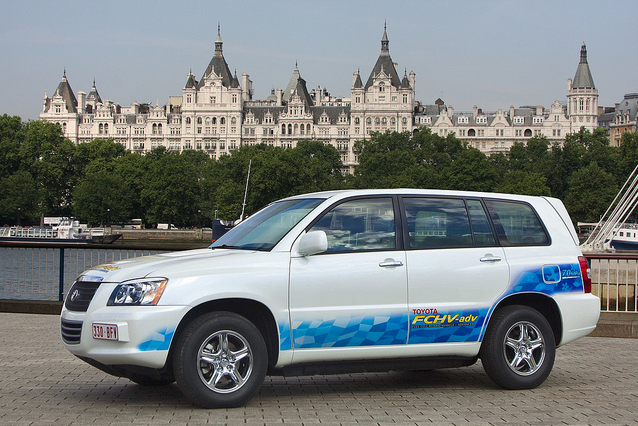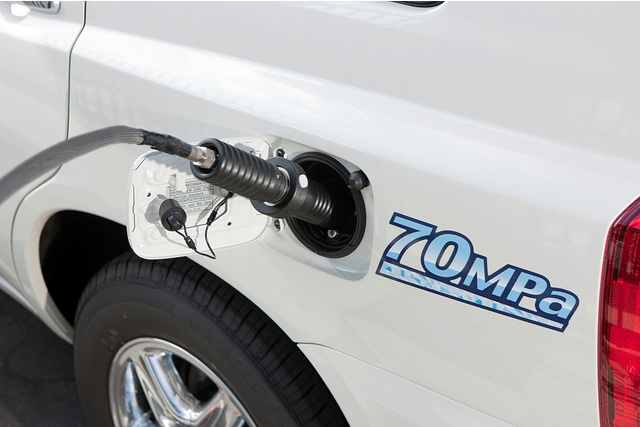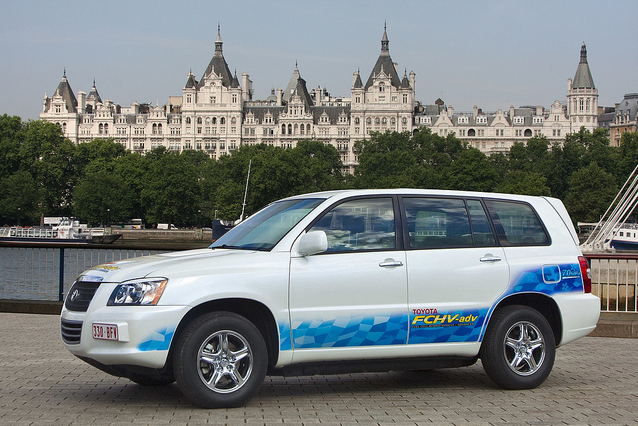
Hydrogen is often promoted as the ideal clean fuel of the future and recently we had a rare chance to see it in action when Toyota brought its FCHV-adv (Fuel Cell Hybrid Vehicle-advanced) to the UK for the RAC Brighton to London Future Car Challenge.
But how does it work and why aren’t these zero emissions vehicles in the showrooms now?
In a fuel cell hybrid, hydrogen is stored in high pressure tanks. By combining with oxygen to make water, it creates electricity to power the vehicle motor. Water and heat are the only by-products of the process, so there are no harmful tailpipe emissions.
The basic principles are simple, but engineers face big challenges to make it work reliably and cost-effectively in a conventional vehicle.
Toyota has overcome the technical stumbling blocks of building a compact and safe on-board storage system and ensuring performance isn’t affected by sub-zero temperatures. It has also worked hard on bringing down the cost of the components and achieving a viable driving range – more than 500 miles on full tanks.
It launched its first FCHV (based on the American Highlander SUV) in 2002 and gathered vital data from road testing to develop the current FCHV-adv, which debuted in 2009. More than 100 FCHV-adv are now on the roads of California and New York state in a demonstration programme that’s preparing the way for the model to go on sale from 2015.
But the success of the project is not just down to Toyota’s technical know-how. It also relies on a new infrastructure being put in place, covering everything from hydrogen production and shipping, to the setting up of filling stations.

Here in Europe early steps are being taken to achieve this through the work of the Clean Energy Partnership. Earlier this year Toyota joined the group as an international auto partner, supplying five FCHV-adv to take part in a government-backed trial in Germany in 2011.
Back in the UK, Guardian environment correspondent, Bibi van der Zee was lucky enough to try the FCH-adv on the road – click here to read her report from the RAC’s eco rally.
For more images of the FCHV-adv in the UK, as well as Toyota’s other ‘future cars’ (including Prius, Auris Hybrid and Prius PHV), click here.




